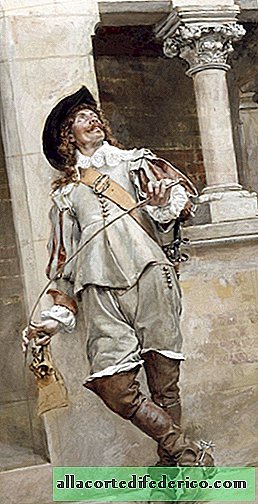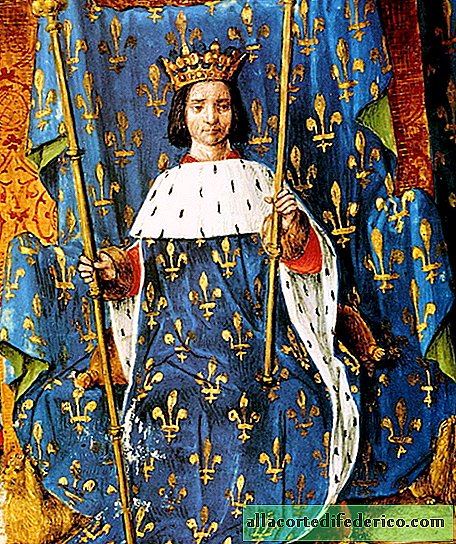"Talking" statues of Rome: what, with whom and how they talk
When they say that in order to study Rome, one life is not enough, most likely this is not an exaggeration. The secrets of the Eternal City are hidden under a two-thousand-year-old load of history. There are so many of them in the city that, most likely, many are still not disclosed.
Despite this, the curiosity of enthusiasts and love for the culture of Rome is as eternal as the city.
Each day can give an interesting story and new emotions. An interesting story is what we need. And "talking statues of Rome" can tell us it. They are hidden in the center of the city. They can tell a lot. Just listen.
 Statue of pasquino
Statue of pasquinoFrom the beginning of the 16th century, announcements criticizing power began to spread in Rome. At night, a large number of statues appeared epigrams in Latin and Italian. Moreover, an unknown author chose such monuments that stood in well-visited places of the city. He counted on the fact that in the morning every citizen would have time to read them before the guards would delete the seditious notes.
Six statues became involuntary participants in this process and conveyed to the common people the thoughts of wits. They came up with a common collective name - "Congress of the Augurs." They served as a daring, satirical, sometimes not too respectful testimony to historians of the attitude of the citizens of Rome towards state power and the heads of the church. Published poetic criticism on famous statues is the first bulletin board in the world. The tradition that began in the 16th century continues today.
The first "talking" statue is Pasquino (also Pasquino). It is located in the square, which today also bears his name, not far from Piazza Navona. The statue, after much reflection and analysis, was defined as an image of the mythical king Menelaus (husband of Elena Troyanskaya). In his arms he holds the body of Patroclus. A copy of this sculpture is located in the Loggia of Lanzi in Florence.
 Statue of Pasquino in the house of Cardinal Ursino. Engraving by Nicholas Beatrizet
Statue of Pasquino in the house of Cardinal Ursino. Engraving by Nicholas BeatrizetA monument located in Rome was discovered in 1501 during work commissioned by Cardinal Oliviero Carafa. He had recently bought a building from Orsini. Today we know him as the Palazzo Braschi. The statue was pulled out of the mud and on the orders of the cardinal himself put on a pedestal in the corner of the palace. She is still there.
Shortly afterwards, small poems or critical epigrams addressed to religious and civil authorities began to appear on the monument. The most famous of them is addressed to Pope Urban VIII Barberini. It sounds like this: "What the barbarians did not complete, Barberini did for them.".
Pope forced the architect Bernini to remove the bronze roof of the Pantheon and make a canopy out of it in St. Peter's Basilica.
The ruling elite of the Catholic Church was often criticized on statues. The Cardinals tried to limit the appearance of comments on Paskvino.
Adriano VI, the only Dutch pope in the history of Catholicism, even planned to dump him in the Tiber. This project, fortunately, could not be implemented. As a result, the authorities decided to guard and guard the statue in order to prevent further publication. Residents turned to other monuments. And so the "talking" statues of Rome appeared.
 Statue of marforio
Statue of marforioThe next "spoke" - Marforio. This monument in the 16th century, by the will of Pope Innocent X, was discovered in the courtyard of the new palace in the Capitoline Museums, in the Capitol.
The colossal statue dating from the first century AD is a large man with a beard. Perhaps it depicts Neptune, perhaps the Tiber, or it is the Roman god Ocean. The statue was found on the Roman Forum near the arch of the emperor of the North, next to the granite pool, on which was the inscription: Mare in foro. Which means "Temple of Mars in the Forum". Most likely the name of the statue came as a derivative of this phrase.
Marforio is considered the "interlocutor" of Pasquino. It is known that in some satyrs the statues conduct a dialogue among themselves. One of them asks questions about social problems, the other answers witty. The most famous dialogue refers to the period of the Napoleonic conquest of Italy. Marforio asks Pasquino: "Is it true that all French are thieves?" To which he answers: "Not all, only the Bona part." There is a play on words. Bona part in translation means - "only some of them" ".
 Madame Lucretius. Most likely, this is a statue of the ancient Egyptian goddess Isis. The Romans named her in honor of the mistress of the Neapolitan king Alfonso of Aragon
Madame Lucretius. Most likely, this is a statue of the ancient Egyptian goddess Isis. The Romans named her in honor of the mistress of the Neapolitan king Alfonso of AragonStatues have become a socially significant phenomenon in the life of Rome. Pasquino became so famous that his name was transformed into the English word pasquinate. It meant a satirical protest in poetry. Currently, in addition to Pasquino and Marforio, talking statues include: Madame Lucretius, Abbot Luigi, Il Babuino and Il Fakkino.
 Abbot Luigi. It was probably a statue of a Roman orator. She was named after a priest from a nearby church who looked like her
Abbot Luigi. It was probably a statue of a Roman orator. She was named after a priest from a nearby church who looked like herToday, only Pasquino remains faithful to tradition: the foundation of the monument is always covered with many satirical poems aimed at those in power. It is obvious that the authors no longer risk being in prison, as happened during the reign of the popes, but there is still the habit of leaving poetry without a signature.

















